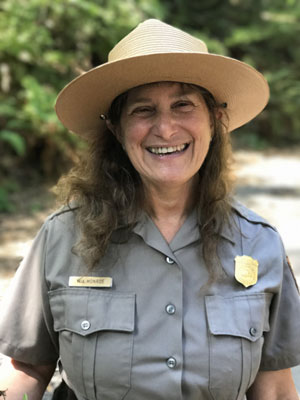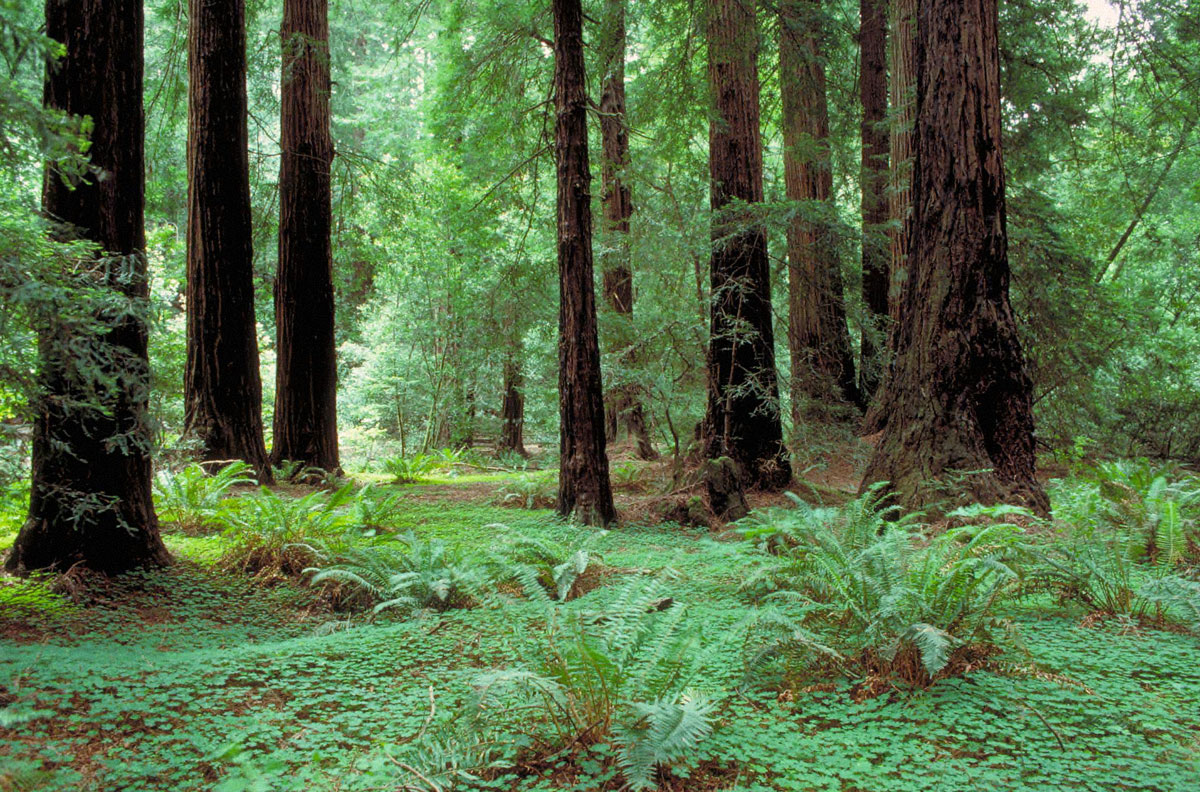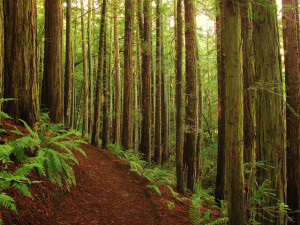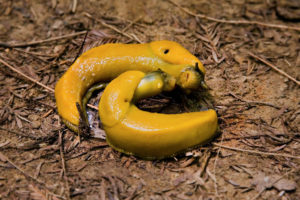Are there old growth redwoods in the Bay Area? -Renee Witon, Oakland
Hi Renee,
Redwood forests are legendary in the San Francisco Bay Area, not only for their early recreational appeal but also as victims of some of the earliest logging due to proximity to San Francisco and Oakland. A true redwood pilgrimage must include catching a glimpse of the tall ones — so tall they stuck up above the fog banks! — on an Oakland ridge rumored to have once guided sailing ships into the Bay, and pointed out on EBRPD walks starting in Redwood Regional Park. The Bay Area is also the home of significant citizen protection efforts at Big Basin, Muir Woods and other areas that are now parklands.
But are all redwood forests the same? The trees may all be California coast redwood (Sequoia sempervirens), thanks to their ability to sprout from stumps and thus retaining genetic lineage going way back, but what I pose here is that a forest is more than the trees! It is also a stable assemblage of multi-story vegetation that supports a complex web of wildlife that is only possible to achieve over the centuries … what we call old-growth: the forest primeval. Old growth is humbling, from the pervasive sense of stepping way back in time, and from the scale as little-us stands near tall-them. The enveloping green lushness, the awareness that life cycles continue on around you, from the nesting of spotted owls to the spawning of salmon, hold the visitor in awe. Old growth has ancient trees and young ones nurtured on nurse logs and tangles of down wood in the creeks. The signs of past cleansing disasters show up as fire scars on the resistant trunks, or fern clumps growing way up there, offering an exciting toehold for unique forms of life way up in the canopy.
This complexity unravels after logging, and this heritage of use has left left than 5 percent of the California old-growth redwood forests of yesteryear. Most of the parks offering a redwood experience are the simpler “second-growth,” which hold the scars of the lumberjack but are also the focus of restoration to help hurry the return of a healthier ecosystem.
It is relatively easy to find redwoods and spend time in their cool shade in the San Francisco Bay Area, but one must really seek out old-growth for that walk back into the well of time. Some old-growth forests are well known and popular like Muir Woods, others are a special destination to seek out. On your list to discover should be Steep Ravine on the western slopes of Mount Tam, and a Marin local’s preserve called Roy’s Redwoods in San Geronimo Valley. For a small grove that’s easy to get to (and near a campground) look for the Pioneer Tree in Samuel P. Taylor State Park in Marin County. In Sonoma, Armstrong Redwoods has old-growth, unlogged groves among the dominant second growth. Go a bit farther north to the quiet trails along the Navarro River to walk among the huge trees at Hendy Woods. And a trip to Santa Cruz County can take you to the legendary groves in Big Basin State Park.
Today, we are learning about another critical value old-growth offers thanks to having more biomass than any other forest: carbon sequestration. Redwoods are also robustly growing more than at any other time thanks to just a bit more C02 in the atmosphere and a tad less fog to let more sunlight in to pump up the photosynthesis. We also are excited to learn about new species “discovered” way up in the canopy (think flying squirrels and salamanders!) and future management strategies such as careful use of fire or thinning, as well as replanting and soil stabilization to help second-growth (once logged) or even third-growth (twice logged) attain invaluable old-growth like characteristics! Those who have redwoods in their yard or community have an amazing resource helping capture moisture and in their disease resistant qualities …watch out, they grow fast!

Mia Monroe grew up in the California enjoying nature with her family and Girl Scouts. From an internship with a citizens’ group working for establishment of the GGNRA she then became a National Park Service ranger. Her career has been primarily among Marin County parklands, especially Muir Woods in the Redwood Creek Watershed. She now is on team working for a healthier future for the old-growth in Marin through national park work and the OneTam collaborative. She volunteers with The Xerces Society to protect monarch butterflies and one of her proudest moments was being honored as Bay Nature Local Heroine.
Ask the Naturalist is a reader-funded bimonthly column with the California Center for Natural History that answers your questions about the natural world of the San Francisco Bay Area. Have a question for the naturalist? Fill out our question form or email us at atn at baynature.org!



